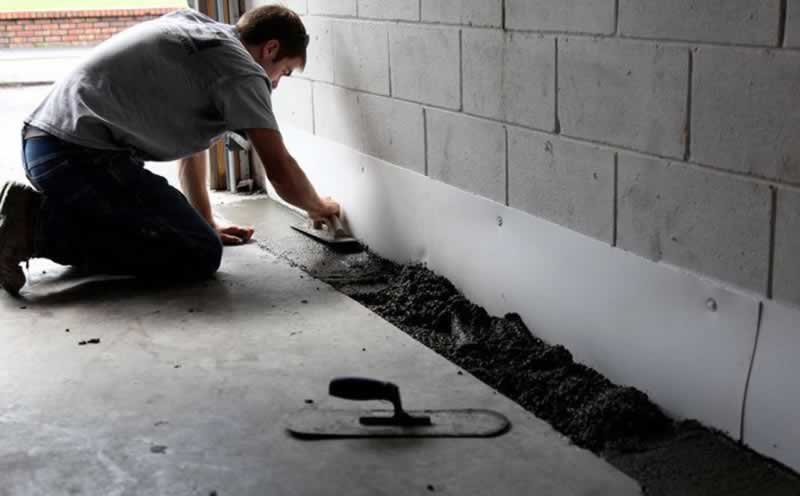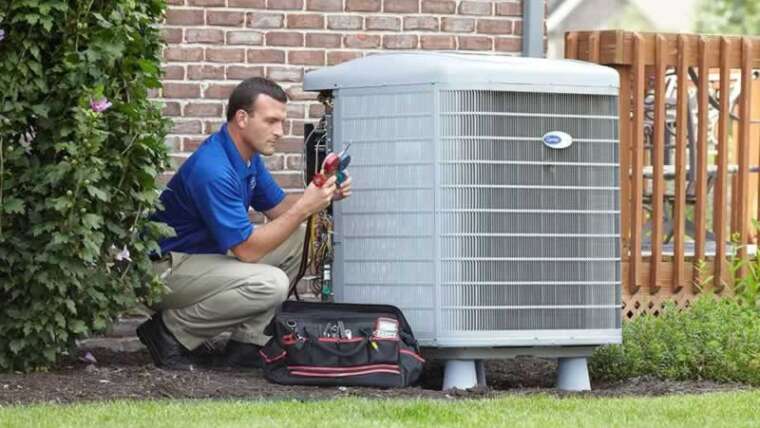Are you concerned about water leaks? You should be 10% of households have water leaks wasting 90 gallons a day. That's 90 gallons that may get into your basement and slowly erode your foundation. Fortunately, you can easily prevent these dangers.
When you're ready to discover the 5 simple steps to sealing a basement, read on.
The sealing of a basement begins with the sealing of the walls
If you find water in your basement, there is a good chance that your foundation is leaking. Moisture penetrates from outside through cracks in your concrete or brick walls. This leads to gradual water damage on the floor as well as ever larger cracks in the walls. The best way to waterproof your basement is to examine your walls for cracks. Approach your project during a sunny period so that the ground is dry outside. This reduces the likelihood of water leaking while working.
Then clean the surface of the foundation. You can use warm soapy water and a nylon or wire brush. You don't have to push hard, you just have to be thorough. Then apply hydraulic cement to the entire foundation. Be sure to fill the areas with the cracks. You may need to go through them several times after the cement has dried. It hardens and hardens quickly. Although most hydraulic cements advertise that application is safe even when water seeps away, we recommend that you wait until the application is dry. Be careful. After you mix the hydraulic cement, it begins to harden within 10 to 15 minutes. Once this happens, you won't make the basement walls waterproof with this mess. You have to throw it away and mix a fresh batch.
Repair damage to the water pipes
Leaky pipes are the other main cause of water damage in basements. Identify your problem lines, starting with those in your home. Follow the water and sewage pipes from your bathroom and kitchen to your basement. Use a flashlight and a dry towel to check for condensation on the joints. Let water run through the pipes for 5 minutes before starting. Next, check under and around your water heater. They often spring up from small leaks before they give way completely. Make sure you buy a water pump as part of your emergency plan for unexpected water seepage in your basement. Basements are underground. If they fill up with water, it is very difficult to get rid of the water without a special pump.
Also check the pipes outside your home, e.g. B. hose and irrigation pipes. If they crack in cold weather, they continue to lick and collect against your foundation. Look for mud or puddles on your lawn that shouldn't be there. Once you find these areas, you'll need to dig them out to expose the pipes underneath. You can use conventional tools such as spades and shovels. You can also use more modern approaches such as hydro excavation nozzles that do the digging for you. Once the tube is exposed, close it and test it. Then it's time to bury it again.
Create a slopping foundation around the basement
A sloping foundation is one that falls away from your house instead of tending to it. This is by far the best way to prevent water from entering your basement and to improve the sealing of your outside basement. Unfortunately, many homeowners only recognize the importance of such a foundation after building their home. Yes, it should be part of your original blueprint. But if you bought your home from someone else or just forgot it, don't be upset. You can include it in your next renovation or remodeling project.

Check for clogged drains
Another source of water that may enter your basement is backups in your sewage system. Fortunately, clogged drains usually leave signs. Water collects in the drains and overflows, leaving puddles, drops of water, and other obvious signs. You should check your water drainage system at least twice a year, once in spring and again in autumn. You want to make sure things go well when winter comes. You also want to make sure that winter doesn't clog your system in spring. Gutters are notorious for being clogged. Clean your gutters regularly. They not only fill with leaves, but also with dirt and other types of waste. Check your gutters for leaks. Make sure you point them away from the house. Make sure that the water flows downhill from the house after it leaves the gutter.
Avoid condensation
Condensation on pipes can be cause for concern, especially when your basement is finished or has wooden floors. The condensed water builds up on cold water pipes that are cooler than the ambient air around them. This applies in particular to damp basements that do not receive direct sunlight. To avoid this problem, wrap your cold water pipes with foam insulation. It is one of the cheapest basement waterproofing materials on the market. It is also easy to install. You can find it in any hardware store. If you live in a cold climate, wrapping your pipes has the added benefit that your pipes won't freeze.
What's next?
Sealing a basement is not easy, but a necessary task if you want to avoid monumental repair damage in the future. Material costs are low, but labor costs can be expensive. If you want to minimize costs, make it a DIY summer project. If you found this information useful, visit our exceptional library of world-class artisan resources. So long and good luck!




